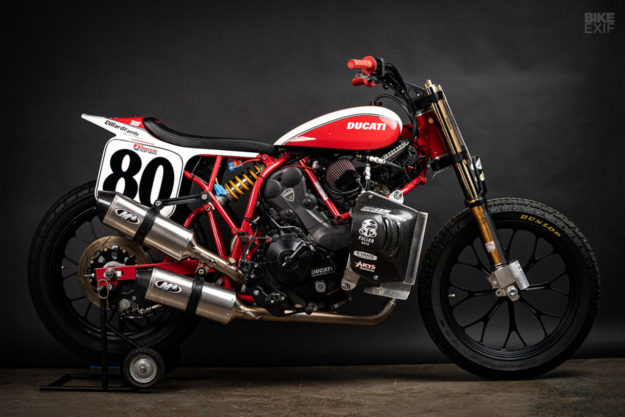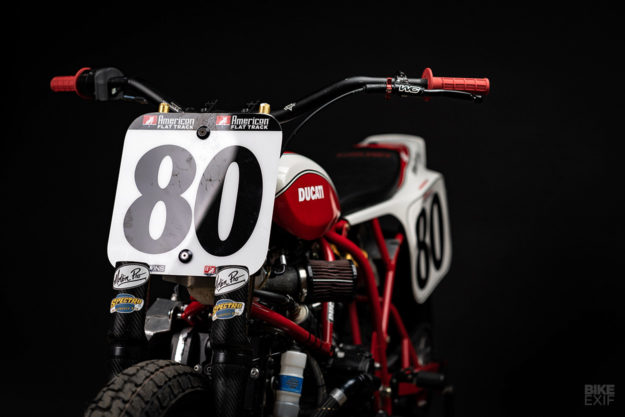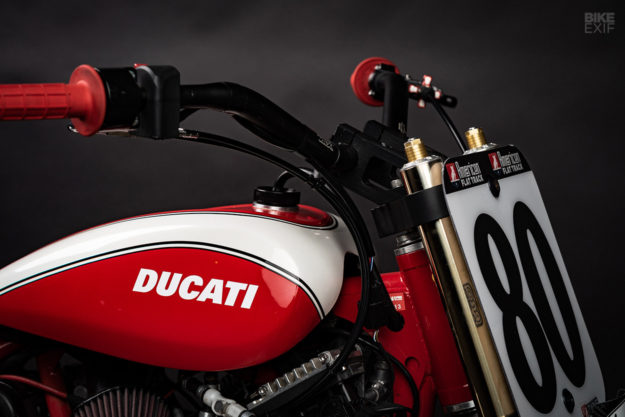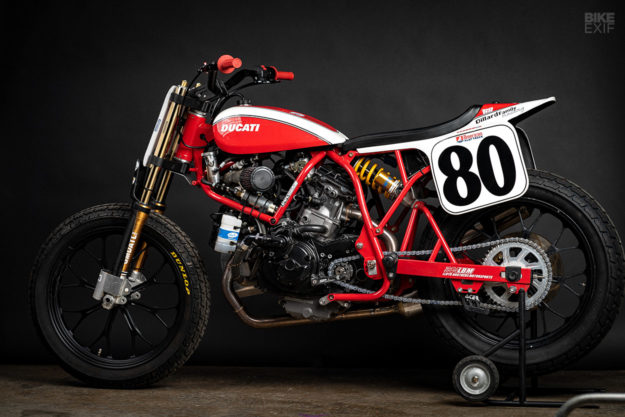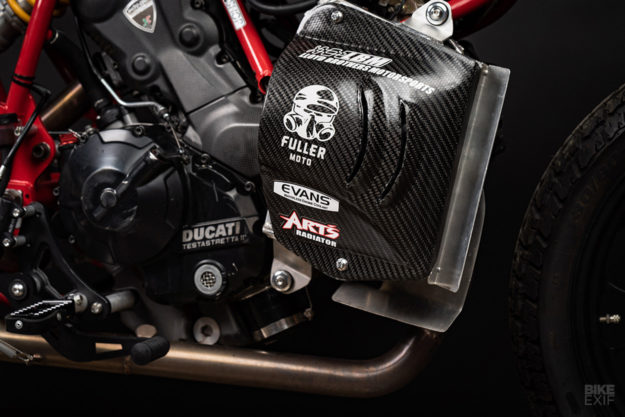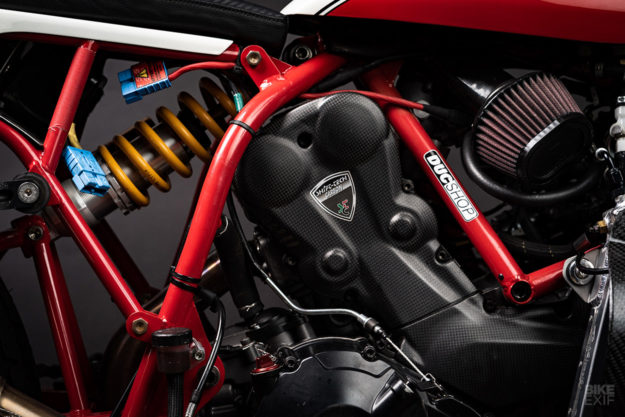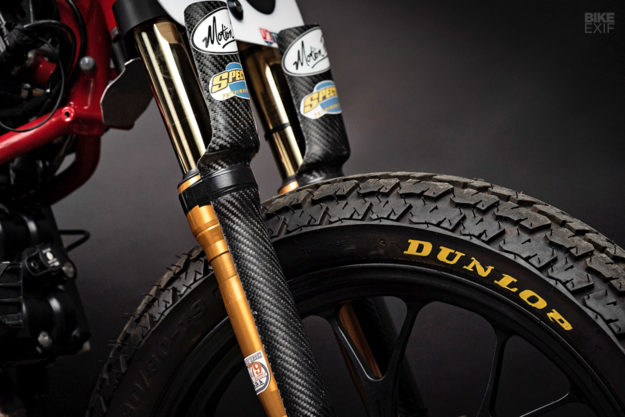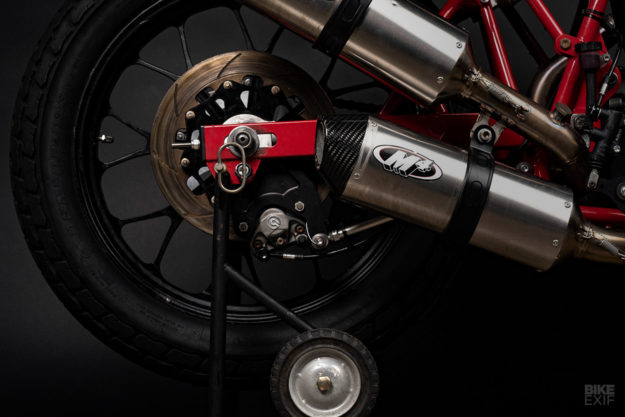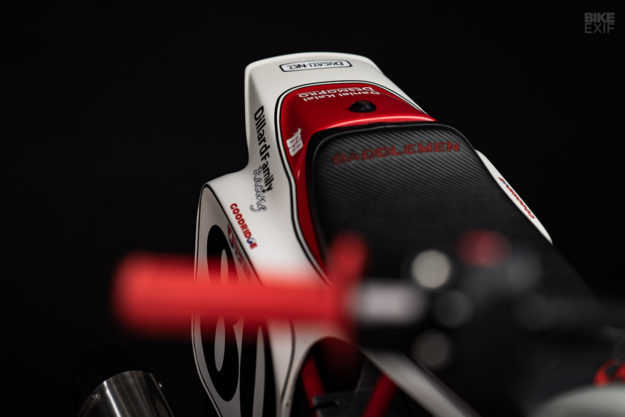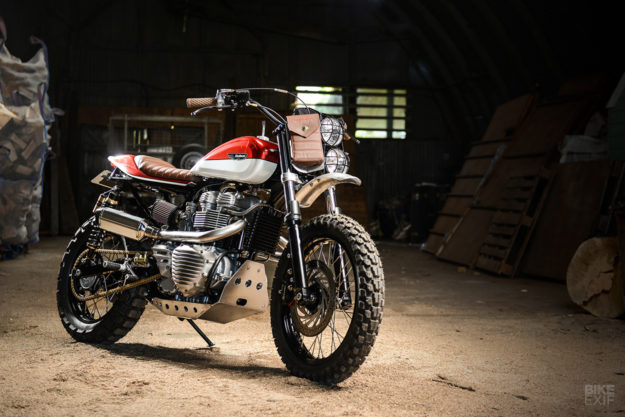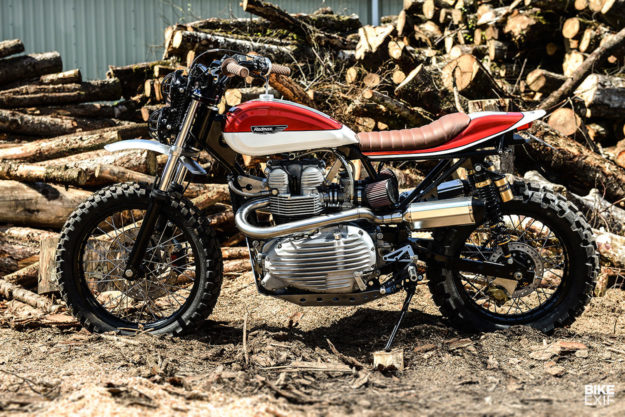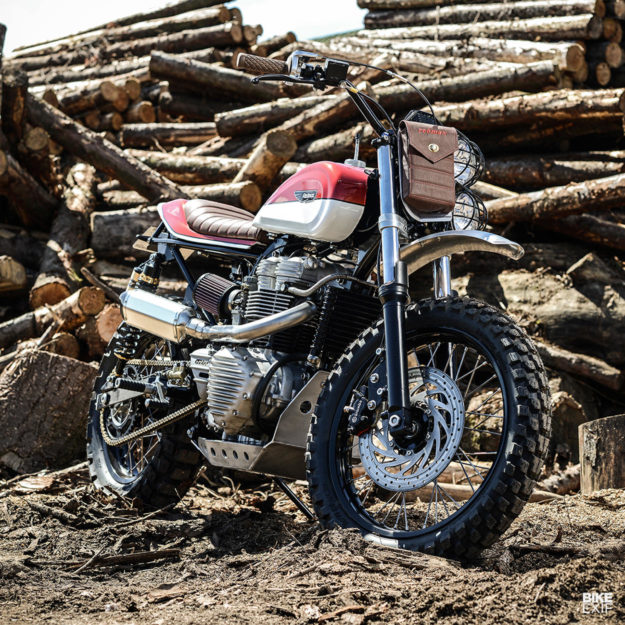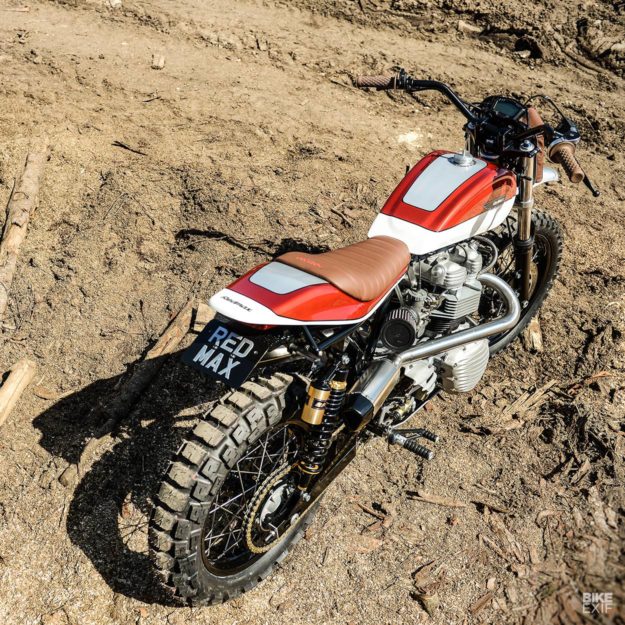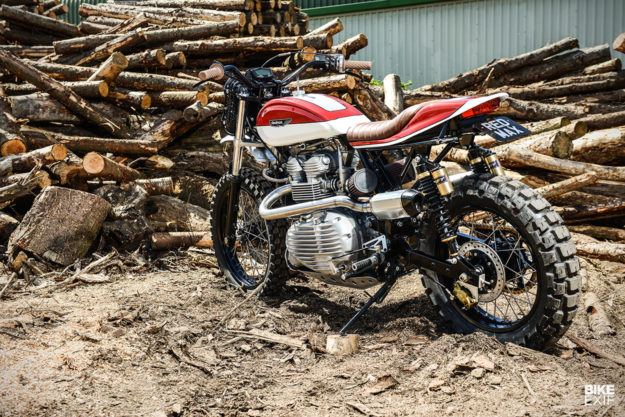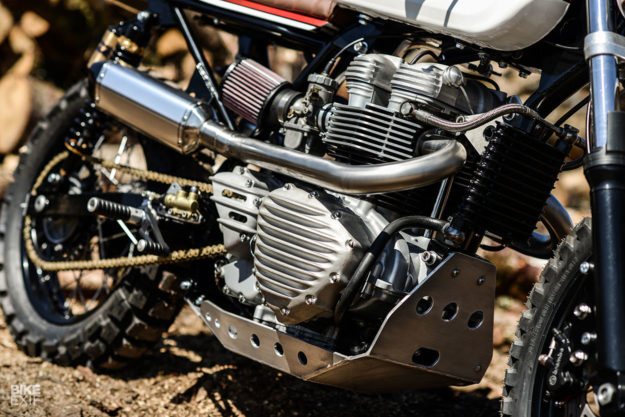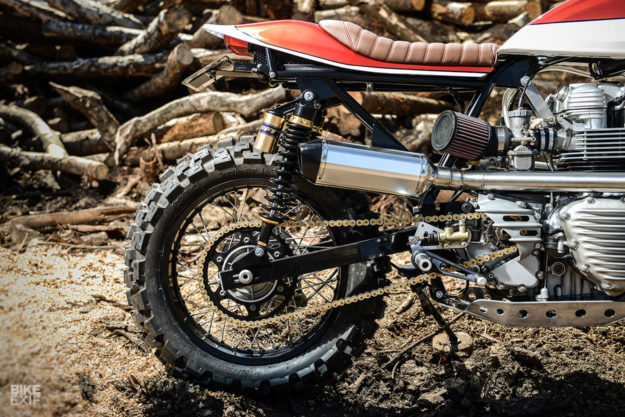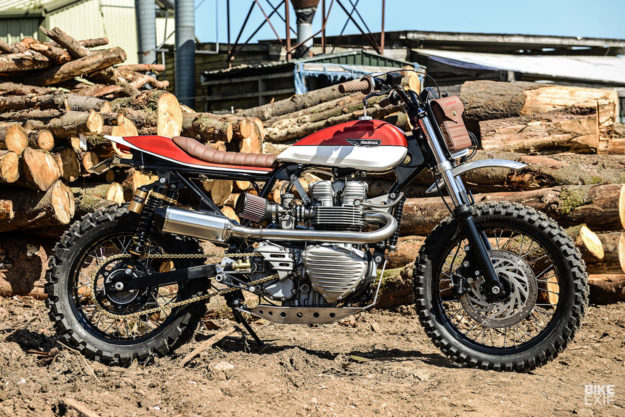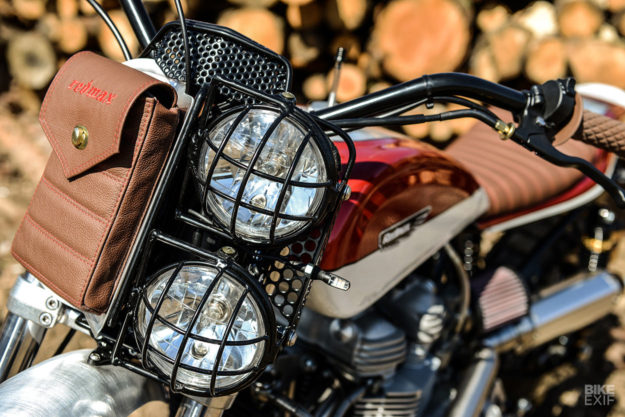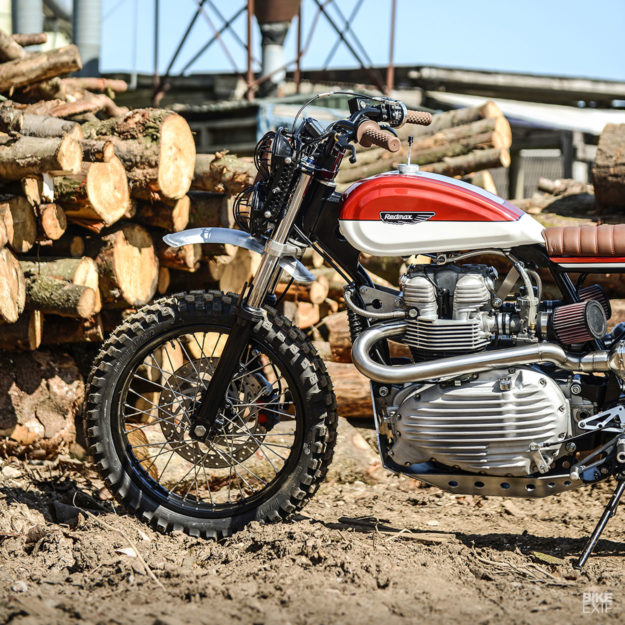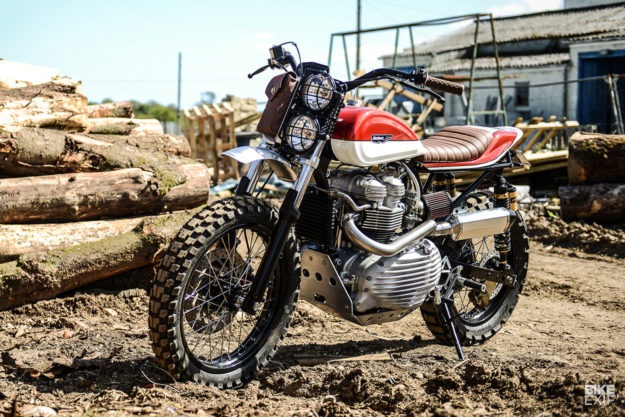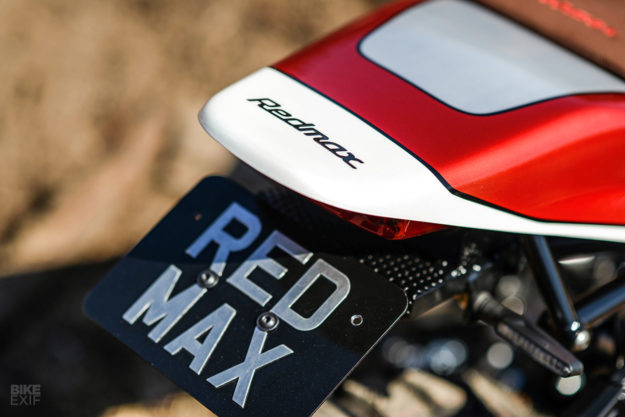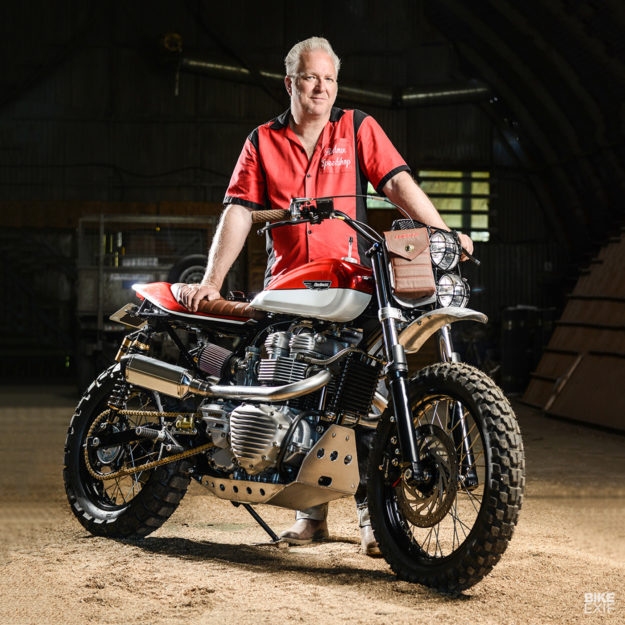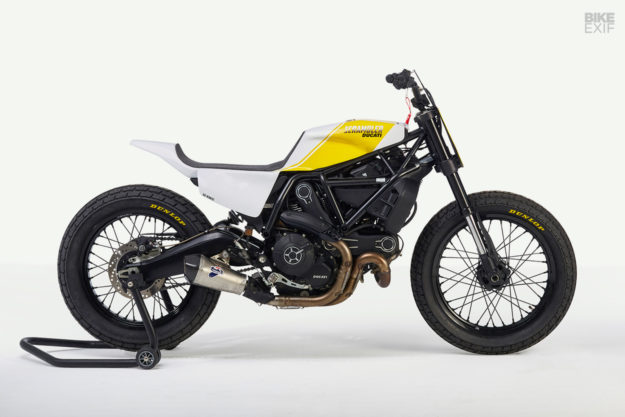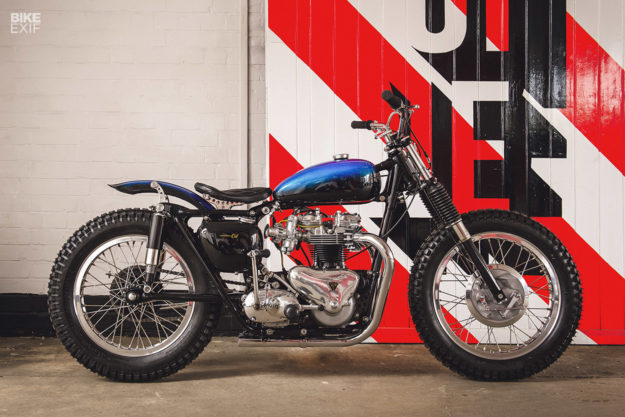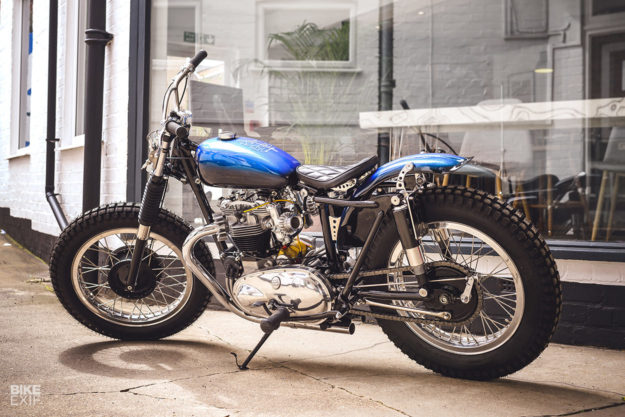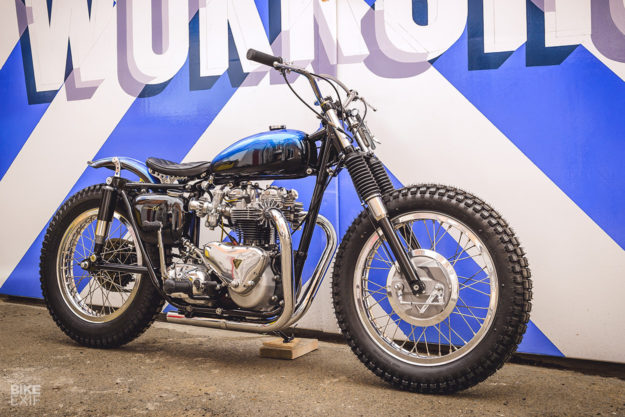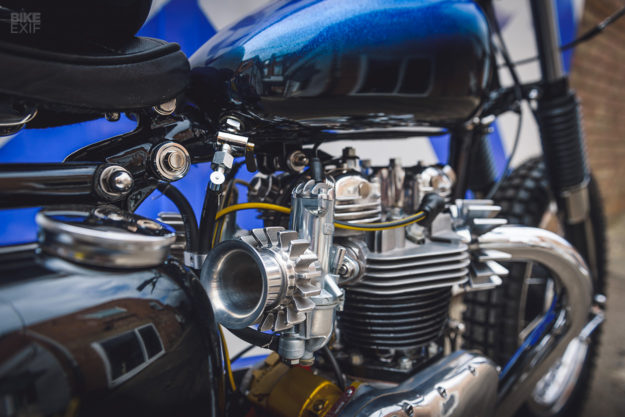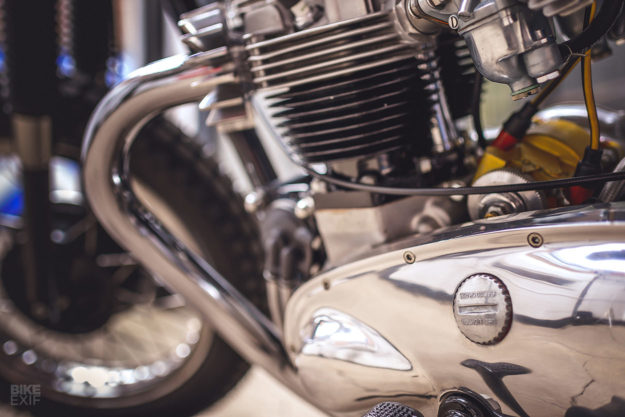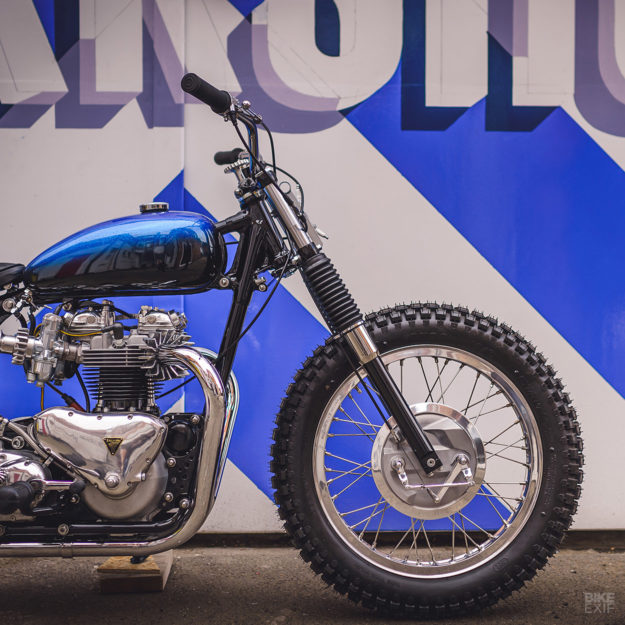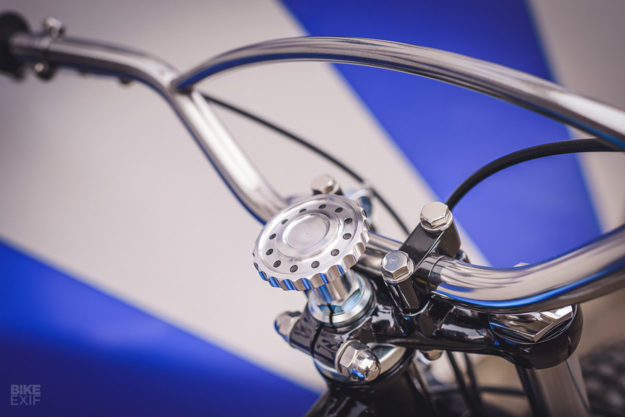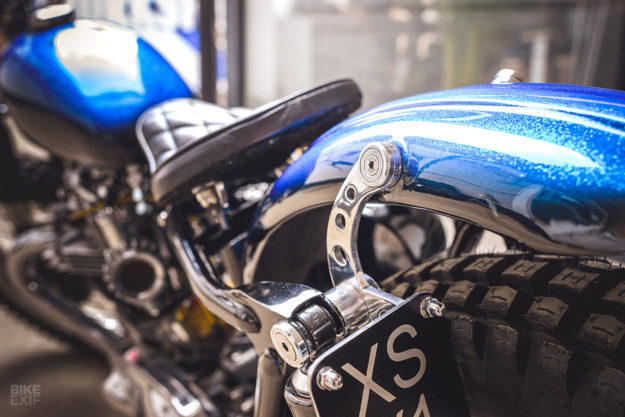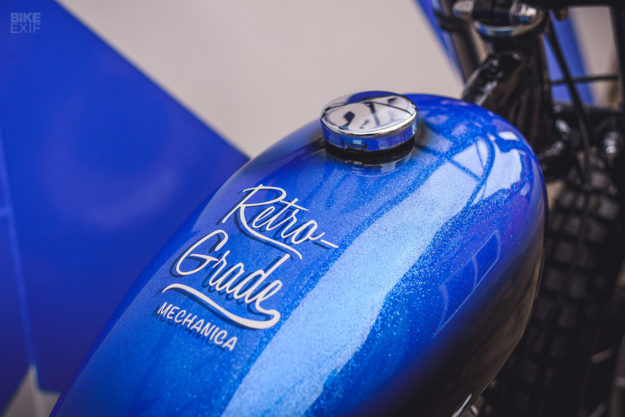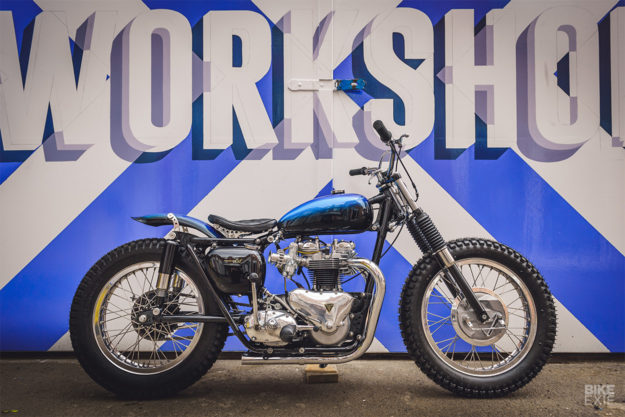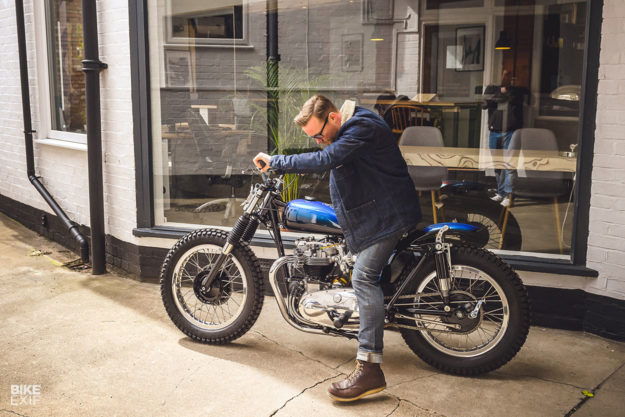![]()
The Glemseck 101 festival being held this weekend is a high-octane celebration of speed and power. At this very moment, thousands of petrolheads are descending on the picturesque market town of Leonberg, near Stuttgart in Germany—seeking out the loudest and fastest customs and racers from all over Europe.
But this year, one of the most interesting bikes will also be one of the smallest: a tiny Honda Monkey built by Kingston Custom for Honda Germany.
![]()
Builder Dirk Oehlerking is best known for his magnificent BMWs, so the little Monkey is a departure for him.
“At the beginning of July I got a call from Erik Mertens of Honda Germany,” Dirk recalls. “He got straight to the point and asked if I was interested in a Honda custom project.”
![]()
There was only one catch, but it was a big one: the bike would need to be presented eight weeks later—today, in fact—at the Glemseck 101.
“I asked which model we were talking about,” said Dirk. “It was the new 125cc Honda Monkey. I did not have to think about it for long, and immediately agreed!”
![]()
The new Monkey is big news. Emboldened by the success of the MSX125 Grom, Honda has thoroughly revamped the mini bike icon and brought it up to date with niceties such as USD forks and ABS, without losing the signature big seat and 70s-style two-tone tank.
A few days later, Dirk picked up a Monkey and whipped out the spanners right away. He quickly set the design direction, a Monkey tracker, and completely disassembled the bike.
![]()
To clean up the look, he reduced the electrical system to its essentials and discarded the ABS and alarm system.
Dirk has been building bikes for longer than most of us have been alive, so he has a treasure trove on the shelves of his Gelsenkirchen workshop. The new bars were the first to come off the shelf: “They’re a bit flatter, and suit the new lines of the bike,” says Dirk.
![]()
The footpegs were also liberated from their lofty perch and installed on the Monkey. “They fitted easily. I think they were from a 1976 CR125 Elsinore.”
To upgrade the suspension, Dirk has ditched the slender stock shocks and installed custom-made YSS units, plus tougher fork internals. The tire choice he found easy: 12-inch all-weather K66 rubber from Heidenau, designed for scooters.
![]()
For 2018, the Monkey gets the punchy engine from the MSX125—which is enough for random wheelies. So Dirk has left the internals alone, and just popped a K&N into the air filter box.
At the exhaust end, he’s swapped out the Monkey’s good-looking but hefty factory system and bulky exhaust shield for a simpler unit. It’s made by the Monkey parts specialist Kepspeed, but adapted by Dirk to fit the 2018 model.
![]()
He’s kept the factory chrome fenders: “They fit perfectly with my design. But I mounted the front fender higher, directly under the fork bridge.”
The massive stock seat is gone though, replaced by a conventional pad with hints of tracker style that sits under the tank line, rather than at the same height. It’s covered with the racer’s favorite cloth, Alcantara.
![]()
Underneath are custom side panels, matching the number board that replaces the bulky headlight up front.
It’s all finished off with a classic red, blue and white color scheme, a nod to the tricolor designs that started appearing on Honda race bikes towards the end of the 70s.
![]()
Kingston’s Monkey loses some of the puppy fat charm of the standard Monkey—but replaces it with an edgier, 70s pit bike vibe that we love.
If this is the first salvo in an impending onslaught of Monkey 125 customs, we’re all for it.
Kingston Custom | Facebook | Images by Ben Ott
